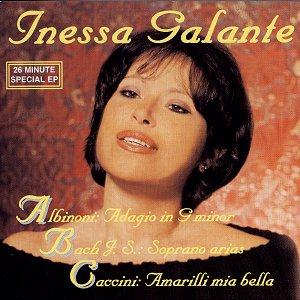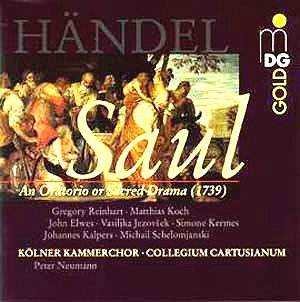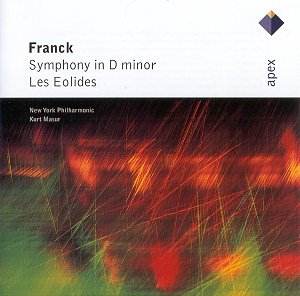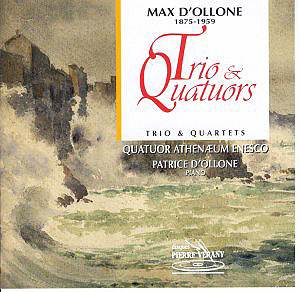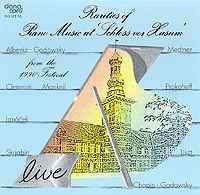 Composer: Rarities
Composer: Rarities
Works: Alexander Scriabin – Polonaise Op. 21; Muzio Clementi – Lento e Patetico; Franz Liszt – Rigoletto-Paraphrase; Franz Liszt – Aux cyprès de la Villa d’Este II; Schubert-Godowsky – Morgengruß; Chopin-Godowsky – Study No. 34 “Mazurka”; Serge Prokofiev – Sarcasm Op. 17 No. 1; Leos Janáček – Sonata “1. X. 1905”; Henning Mankell – Intermezzo Op. 12 No. 2; Nikolai Medtner – Stimmungsbild Op. 1 No. 4; Leopold Godowsky – The Musical Clock; Isaac Albéniz-Godowsky – “Triana”
Performers: Igor Shukow, Claudius Tanski, Janice Weber, Benedikt Koehlen, Bengt Forsberg, Marc-André Hamelin, Geoffrey Douglas Madge, Abbey Simon
Recording: Live at ScHloss vor Husum, August 18-25, 1990
Label: Danacord DACOCD 379
The second volume of the Husum Festival of Rare Piano Music, recorded in 1990, presents a compelling collection of lesser-known piano works that span a remarkable historical and stylistic spectrum. This album not only celebrates the artistry of the performers but also serves as a testament to the rich, yet often overlooked, repertoire that exists beyond the standard canon. The selections featured here, from Scriabin’s Polonaise to Godowsky’s intricate transcriptions, reveal the depth and diversity of the piano’s literature.
Igor Shukow opens the album with Scriabin’s Polonaise Op. 21, a work that straddles the late Romantic era and the burgeoning Modernist movements. Shukow’s interpretation captures the piece’s contrasts: its lyrical passages emerge with a Chopinesque charm, while the aggressive octaves underscore an inner turmoil. The technical demands of the Polonaise are handled adeptly, revealing Shukow’s deep affinity for Scriabin’s harmonic language. The subsequent performance of Clementi’s Lento e Patetico by Claudius Tanski showcases a different facet of pianism, drawing the listener into a contemplative realm. Tanski navigates the piece’s Baroque-inflected opening with grace, transitioning smoothly into its classical idioms, effectively illuminating the work’s emotional breadth.
Franz Liszt’s Rigoletto-Paraphrase, also performed by Tanski, is a formidable display of virtuosity. Liszt’s ability to transform operatic themes into a concert setting is evident here, and Tanski’s interpretation balances the intricacies of pianistic texture with the lyrical demands of bel canto. The performance is impressive, yet it is Janice Weber’s rendition of Aux cyprès de la Villa d’Este II that truly resonates with profound introspection. Weber’s touch is delicate, evoking the serene beauty of the Villa d’Este itself and encapsulating the reflective nature of Liszt’s later style.
Benedikt Koehlen’s performance of Janáček’s Sonata “1. X. 1905” is particularly noteworthy. The sonata, a poignant response to political oppression, is imbued with a palpable sense of urgency and lamentation. Koehlen captures the work’s expressive contrasts, moving from the stark, almost brutal opening to moments of lyrical beauty, embodying the emotional weight of Janáček’s response to the sociopolitical climate of his time. This performance stands out for its clarity and emotional resonance, aligning with the historical context of the piece.
The recording quality merits mention as well; the engineers have effectively captured the nuances of these performances, allowing the listener to appreciate the subtleties of dynamics and color that each pianist brings to their respective works. The acoustics of the ScHloss vor Husum enhance the richness of the piano sound, creating an immersive listening experience that feels intimate and immediate.
Of particular interest are the contributions from lesser-known composers, such as Henning Mankell and Nikolai Medtner. Mankell’s Intermezzo Op. 12 No. 2, performed by Forsberg, offers a glimpse into a sound world that is at once familiar yet intriguingly unconventional, while Medtner’s Stimmungsbild reveals a youthful composer grappling with the influences of his time, performed with sensitivity.
The inclusion of Godowsky’s arrangements, including the delightful Musical Clock and the intricate “Triana,” illustrates the pianist-composer’s remarkable ability to reinterpret and elevate existing works. Hamelin and Madge both shine in their respective performances, demonstrating the technical sophistication and interpretative depth that Godowsky’s pieces demand.
This volume of the Husum Festival is a vital addition to the discography of piano music, not merely for its collection of hidden treasures but also for the exceptional performances that breathe new life into these works. Each pianist brings a unique perspective, creating a tapestry of sound that celebrates both the old and the new. For enthusiasts and those seeking to expand their understanding of piano repertoire, this recording is indispensable.
